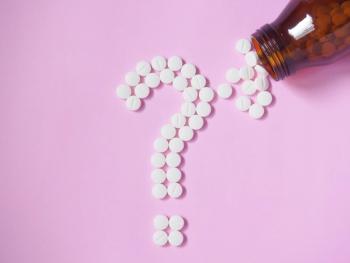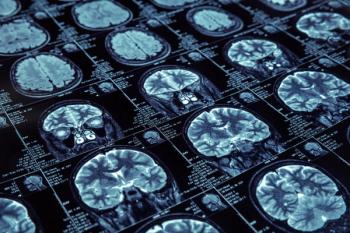
- Volume 0 0
PDE5s Revolutionize the Awareness and Treatment of Erectile Dysfunction
The numerous television ads for tadalafil, vardenafil, and sildenafil are bringing an increased awareness of the problem of erectile dysfunction (ED) that over 30 million men in America deal with daily. Confronting ED offers a great opportunity for health care providers (HCPs) to assist these men and also to evaluate them for diseases like diabetes, cardiovascular conditions, and depression that are often comorbid conditions. If the HCP does have a patient who has ED, the good news is that there are now effective oral treatments for it, with a low incidence of side effects.
It is important for HCPs to ask the patient if he has any erection problems (Table).1 Almost every man develops some degree of ED as he ages. The major aging problem related to ED is due to venous leakage.2 When this occurs, the blood flows out of the erect penis, causing the man to be unable to maintain an erection.
Another factor that needs to be considered is the relationship aspect. If patients do not have a loving, caring, sharing, supportive relationship or if they are just bored with each other, the stimulus resulting in the man getting an erection may not work.3
Before the development of vacuum devices and injections of prostaglandin E1, there were few effective treatments for ED. In recent years, treatment of ED has taken a giant leap forward with the approval of phosphodiesterase enzyme 5 (PDE5) inhibitors. Sildenafil was first on the market in 1998, vardenafil and tadalafil were approved in 2003.4-6 All of these drugs enable the vast majority of men with ED to have an erection after sexual stimulation occurs but each drug is a little different. The 4 questions asked most often by physicians about the differences in these medications include: (1) Do they work? (2) Are they safe? (3) How do they differ? and (4) How do I dose them?
They are all effective and work well in most patients. There are no head-to-head studies yet. Patients with different levels of ED are used in studies but one PDE5 inhibitor does not seem to have any significant efficacy difference over another. They are safe in a majority of the men using them. Most common side effects include headache, maybe some gastrointestinal distress; but most of these are transient and as the patient continues to use them, the side effects diminish.7-9
PDE5s are contraindicated in men taking nitrates and each differs in regard to use with alpha blockers. Sildenafil at doses of >25 mg can be used but the drugs must be taken 4 hours apart. Vardenafil is contraindicated with alpha blocker use, while tadalafil can be used with up to 0.4 mg of tamsulosin daily. Tadalafil does not cause blue haze in the field of vision since it's highly selective for PDE5 in the genital area; has not had any reports of priapism in clinical trials (this is a warning with all PDE5s); does not increase the heart rate or lower blood pressure significantly; and has not been reported to cause facial flushing.7-9
The difference in the medications mainly relates to impact of food on the effectiveness of the drug and duration of activity. Food can delay the effect of sildenafil. Vardenafil may be delayed if the patient eats a high-fat meal. Tadalafil is not affected by food. All 3 drugs should be taken 30 to 60 minutes before any sexual activity. One of the major differences between the drugs is duration of activity. Tadalafil works for 36 hours while sildenafil and vardenafil work for up to 4 hours.
It is best to have patients use PDE5s at least 5 to 10 times to see if it is effective in overcoming the ED. All of the manufacturers have programs that provide samples for men to try the product. If a patient gets the needed stimulation and an erection occurs, then a sexual encounter can be achieved and enjoyed.
PDE5s have revolutionized the awareness and treatment of ED. If HCPs will initiate the discussion of ED, give the patient a thorough medical exam, and discuss how to properly use the medications, it is a win?win situation for all concerned.
References
1. Ende J, Rockwell S, Glasgow M. The sexual history in general medicine practice. Arch Intern Med. 1984;144:558-561.
2. Feldman HA, Goldstein I, Hatzichristou DG, et al. Impotence and its medical and psychosocial correlates: results of the Massachusetts Male Aging Study. J Urol. 1994;151:54-61.
3. Sadovsky R. The role of primary care clinicians in the management of erectile dysfunction. Reviews in Urology. 2002;4:554-563.
4. Approval letter for Viagra. http://www.fda.gov/cder/foi/nda/98/viagra/AP_LTR.pdf.
5. Approval letter for Levitra. http://www.fda.gov/cder/foi/appletter/2003/21400ltr.pdf.
6. Approval letter for Cialis. http://www.fda.gov/cder/foi/appletter/2003/21368ltr.pdf.
7. Viagra prescribing information. New York, NY: Pfizer Labs; 2003.
8. Levitra prescribing information. West Haven, Conn: Bayer Pharmaceuticals Corporation; 2003.
9. Cialis prescribing information. Indianapolis, Ind: Lilly ICOS; 2003.
Articles in this issue
over 21 years ago
CE Examover 21 years ago
Clinical Perspectives in Erectile Dysfunction: Case Studiesover 21 years ago
Emerging Treatments for the Management of Erectile DysfunctionNewsletter
Stay informed on drug updates, treatment guidelines, and pharmacy practice trends—subscribe to Pharmacy Times for weekly clinical insights.

















































































































































































































